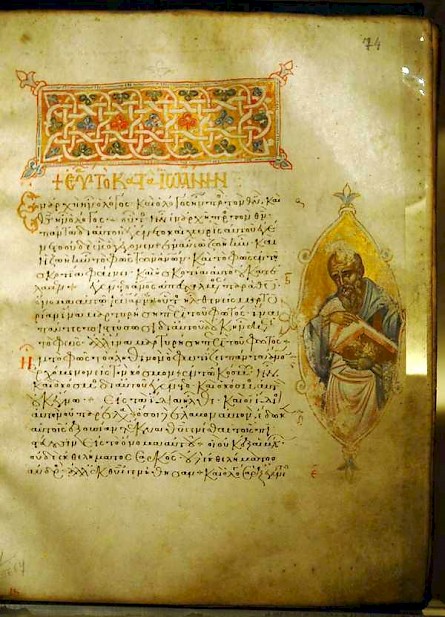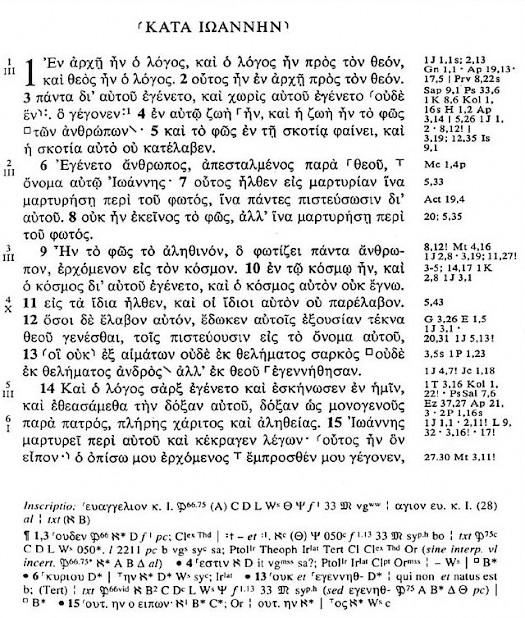Textual criticism
Textual criticism: the study of medieval manuscripts in order to reconstruct ancient texts.

Ancient sources have been passed down to us in medieval manuscripts, which were copied manually. Unfortunately, it is impossible for humans to copy a long text without making errors, which means that our manuscripts are imperfect. The Italian scholar Angelo Poliziano (1454-1494, “Politian”) was the first to realize that if you looked carefully at the errors in existing manuscripts, you might reconstruct a lost original. His own discovery was that all manuscripts of Valerius Flaccus’ Argonautica had been derived from the same book, which had contained several pages in the wrong sequence. All manuscripts contained the same error, proving that it had been in the original text (“archetype”).
This was the beginning of what is now called “textual criticism”. Modern editions of ancient texts always have a list of the manuscripts and a history of the way in which the text has been passed down, the “tradition”. Usually, there’s also a family tree (“stemma”) of the available and reconstructed manuscripts. If there are many texts, classicists can even recognize families that go back to different archetypes, which can be used to reconstruct an archetype behind the archetypes. Here is an example, based on the manuscripts of Herodotus' Histories. There are, in fact, forty-six manuscripts, but most of them can be eliminated, leaving only seven relevant manuscripts, called A, B, C, D, R, S, and V.

In this stemma, manuscripts A, B, and C are related to each other, because they are based on the same manuscript, which is lost but can be reconstructed. It is indicated as [a]. Something similar can be said of R, S, and V, which are derived from [r]. These are two families. Comparison of D and [r] helps us reconstruct [d], which in turn can be compared to [a]. In this way, we can make a reconstruction of the archetype, [x]. All known manuscripts are based on this archetype, which does not mean that this is the original text, as written by Herodotus himself. However, [x] comes closer to the original than any of the existing manuscripts.

A modern edition of an ancient text usually has a "critical apparatus". An example can be seen in the picture: the prologue of the Gospel of John. The main text is the best reconstruction the editors could make, and at the foot of the page, you can see variant readings. In the column to the right, you can see references to related Biblical texts.
A real scholar is, of course, satisfied only if there is independent proof that this method is correct. Fortunately, this exists. Among the papyri discovered in the Egyptian desert, texts have been discovered that were identical to reconstructions that had been made much earlier. It is, of course, only a small test, but it sufficient to prove that the principles of reconstruction are sound.
Politian was the first to realize the potential and later classicists have improved this method. His younger contemporary Desiderius Erasmus (1466-1536) introduced the rule known as lectio difficicilior potior. Another improvement was the recognition of “horizontal tradition”, which takes place when a copyist uses more than one manuscript to make his own text. In its simplest form, he copied one text and inserted variants of the second text in the margin of his book. This is of course easy to recognize, but things can be quite difficult when the copyist, on every occasion, chose the variant he thought best, now preferring the first and then the second text.
Textual criticism has been increasingly refined and the results have become progressively better. In its present form, it was proposed by the Swedish jurist Carl Johan Schlyter (1795-1888). It was so enthusiastically propagated by the German classicist Karl Lachmann (1793-1851), that it often called the Lachmann Method. It was the model for the biological theory that humans and monkeys have the same ancestor; in other words, modern evolutionism is inspired by textual criticism.